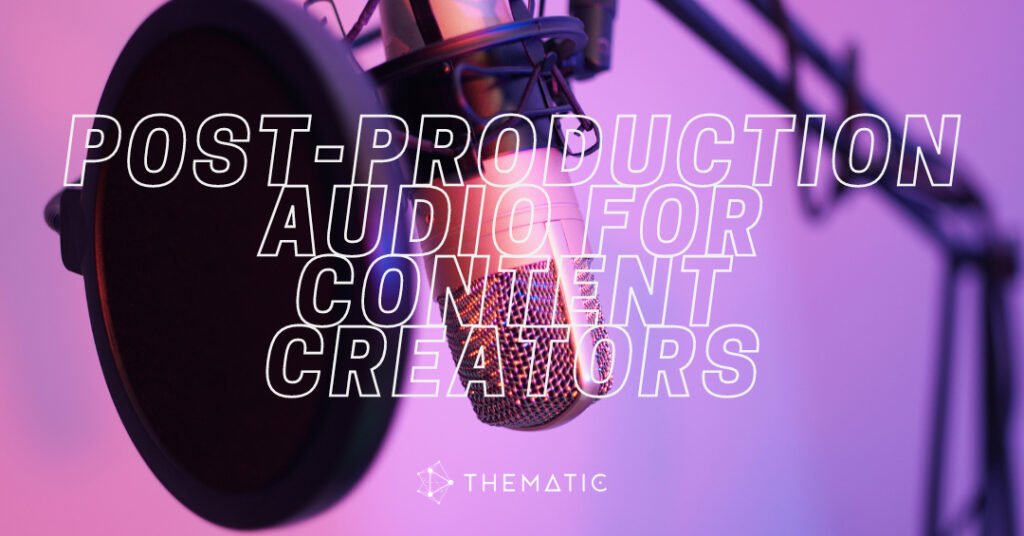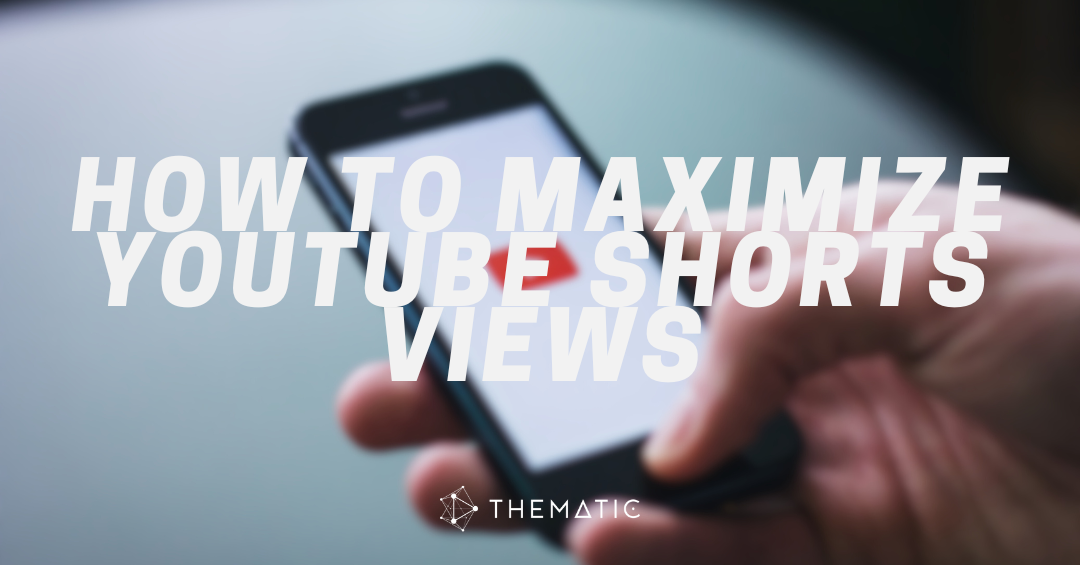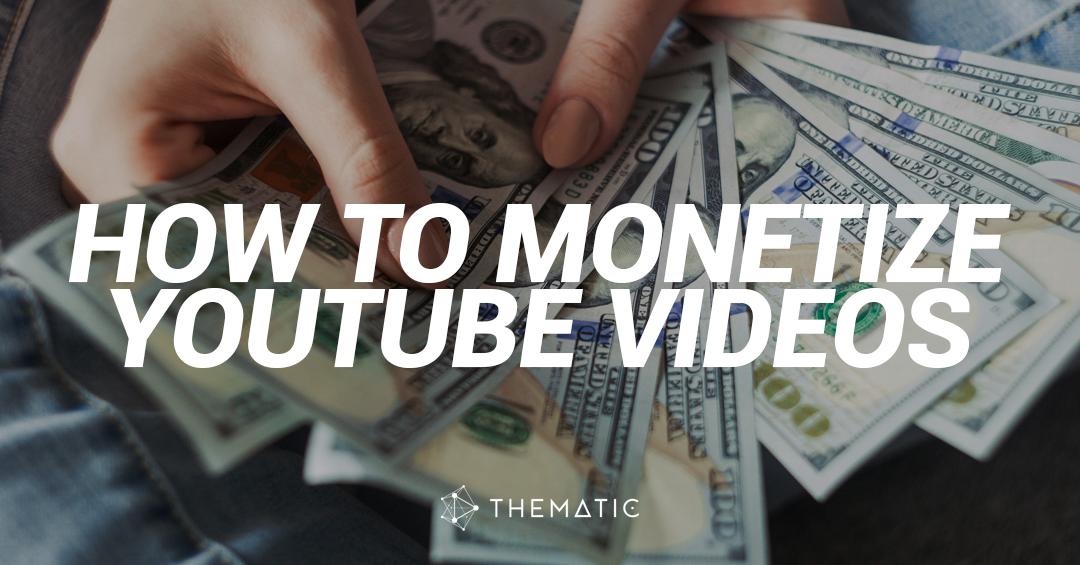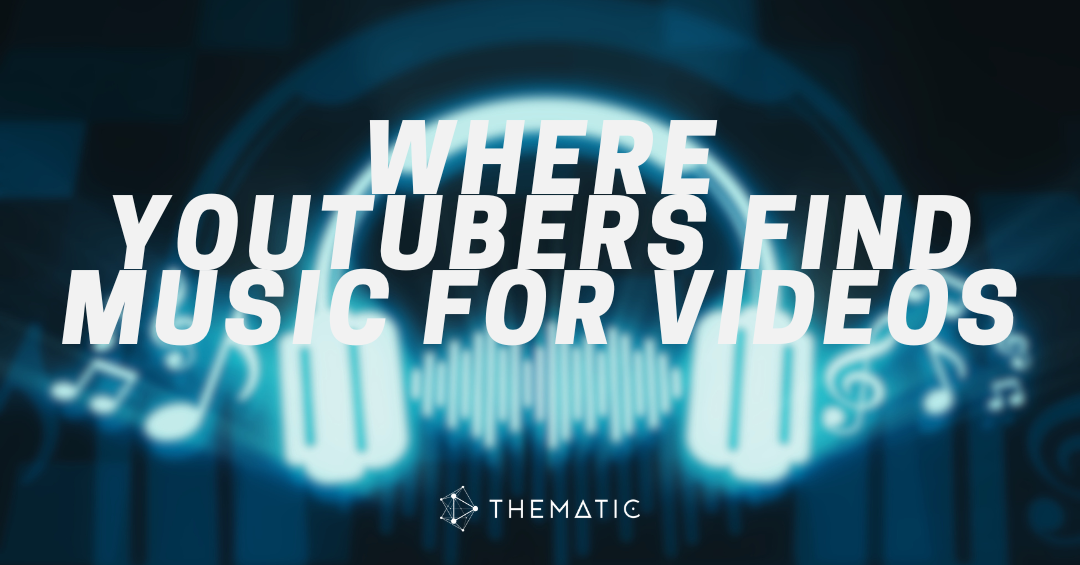Post-production audio is the art of sound mixing and editing for video media. It’s a professional discipline that plays a role in every major film and TV production.
While it may seem like an industry reserved for only the best-funded projects, every content creator has to work with audio to release quality videos.
It’s the reason why audio skills are so important to master for content creators.
So how can you learn post-production audio for the content you create? What are the fundamentals of the post-production process and how can you improve your video and audio editing skills?
In this article I’ll break down the basics of post-production audio and explain the five key techniques involved.

- What is post-production audio?
- What happens during audio post-production?
- How to learn post-production audio as a content creator
- Audio odyssey
What is post-production audio?
Post-production audio is any mixing, editing or re-recording operations that take place after principal photography has been completed.
It includes everything from dubbing over noisy location audio to complex music cues and sound effects design.
Post-production audio shares its basic DNA with music mixing techniques. But it employs specialized versions of them for situations unique to video production.
Post-production audio is usually carried out by a separate team of skilled professionals.
But the basic elements of working with audio are essential to know for anyone looking to create polished video content.
What happens during audio post-production?
With the basic definition out of the way, post-production audio is broken down into distinct phases that require different skills.
Here are the four main tasks in any post-production audio workflow:
1. Editing
Audio editing is the process of changing, rearranging or cleaning up audio in a digital audio workstation or video editing app.
It’s important to edit your audio so that it syncs cleanly with the video and doesn’t contain any distracting noise or imperfections.
But editing audio also means adding sound effects, setting up music cues and making dialogue sound clear and crisp.
If you edit audio inside your main video editor, you’ll have to get used to the cutting, pasting and splicing techniques that allow you to manipulate it.
Here are some quick tips to help you edit better audio:
- Apply short fades to every region on the timeline to avoid clicks and pops
- Adjust the curve of longer fades for a smoother or more rapid fade in or out
- Use the nudge control to move audio clips by a frame or less
2. Automatic Dialogue Replacement (ADR)
ADR or automatic dialogue replacement is a term you’ll probably hear if you work on a major film production.
Location audio is often captured under less than ideal conditions. It’s common for many big budget productions to re-record essential audio like dialogue in a studio during post-production.
This means the actors have to lip-sync their lines to their performance on screen to record the finished dialogue.
This process is less critical for content creators since online audiences are less demanding. They sometimes even prefer the immediacy of location sound!
That said, if you ever record voice-over passages, you’ll probably need to understand the basics of dialogue recording.
Check out the LANDR guide to microphones and audio interfaces to get the tools you need to track great-sounding dialogue or voice-over.
3. Sound Design
So many classic movies wouldn’t be the same without great sound design. Think of the iconic swoosh of a Star Wars lightsaber!
The term means creating sounds from scratch for specific situations in a movie or clip.
If you’ve ever heard a unique audio tag at the beginning or end of a savvy creator’s video, you know that sound design can make a difference.
Luckily, creating interesting sounds with software isn’t as hard as it seems.
We published a full guide to the basics of sound design if you want to learn more about the topic.
4. Mixing
Mixing is a deep subject that can take years to learn well.
When it comes to music production, mixing is a creative art form that helps give the finished product its aesthetic style.
Mixing for picture can also be creative, but it’s often practical as well. You’ll have to make sure that voices, music and sound effects are all balanced relative to each other. You can also set the spatial position of sound between the left and right speaker with panning.
Not only that, you may have to manipulate the audio in your project to sound more pleasing or fit better into the context overall.
Professional mixers use audio tools like EQ and compression to control the frequency balance and dynamics of sounds in their mix.
This is especially important for ensuring dialogue is loud and clear without sounding fatiguing to the listener.
How can you learn audio post-production as a content creator?
With all the techniques I mentioned above, it may seem difficult to master audio post-production. But like so many other creative pursuits, the best advice is to just dive in and get started.
As you become more familiar with your editing software and encounter more audio situations, you’ll have to work out the specifics as you go.
Luckily, there’s another easy place you can turn for help – other content creators!
There’s a huge library of educational content available on YouTube and elsewhere to help new creators learn audio techniques.
In fact, LANDR’s YouTube channel offers plenty of introductory advice for basic audio concepts. You might find it helpful, even if you don’t produce music!
From there, you’ll find excellent post-production audio tips from channels like lil soy sauce, L.Dre, EdTalenti, and Larry Ohh.
Audio odyssey
Great audio is a key part of any effective video media. The more skills you have to get it right, the better your final result will feel overall.
Now that you have the basic concepts in post-production audio under your belt, get back to creating and use your skills to enhance your next video.
Audio Post-Production FAQs
Let’s dive into some of the most frequently asked questions creators have about audio post-production!
What is the difference between post-production and editing?
Post-production involves all the tasks that come after filming, including editing, sound design, visual effects, color correction, sound effects, and more. Editing, on the other hand, is a specific part of post-production that involves selecting and arranging footage to create a coherent story or message. It is the process of combining individual shots, adjusting the length of each shot, and adding transitions to create a cohesive narrative.
What is the difference between pre-production and post-production?
Pre-production is the planning and preparation phase before filming or recording begins. This includes tasks such as scriptwriting, casting, location scouting, and creating storyboards. Post-production is the phase after filming or recording is complete, where the raw footage is edited, sound is added, special effects are added, and color grading is done to create the final product.
How long should a social media video be?
The ideal length of a social media video depends on the platform and the content of the video. For example, Instagram recommends videos to be no longer than 60 seconds, while Twitter recommends videos to be no longer than 2 minutes and 20 seconds. On the other hand, YouTube can accommodate longer videos, with the recommended length being 3 to 5 minutes. Ultimately, it’s important to remember that viewers have short attention spans, so it’s best to keep the video as short as possible while still conveying the intended message effectively.
Where can I download free music for videos?
Thematic offers a vast collection of copyright-free music that can be downloaded for free. The platform is a safe and reliable option for content creators who are looking for music to use in their videos for social media applications. Thematic’s library includes various genres of music, and the tracks are cleared for use on popular social media platforms such as YouTube, Instagram, and TikTok. By using Thematic, content creators can avoid copyright infringements, and their videos will be safe from takedowns and potential lawsuits.
We hope you enjoyed this guide to the basics of post-production audio for content creators. These tips and techniques should set you up for the best sounding audio experience for your YouTube videos ✅
Looking for more creator tools and resources? Visit Thematic’s Creator Toolkit for additional resources on creating content – including starting a YouTube channel, thumbnail and channel art templates, best practices, and of course, great royalty free songs to use in your videos for free with Thematic.

This guide to post-production audio for video content creators is brought to you by Thematic Partner Company LANDR
LANDR is the creative platform for musicians: AI-powered music mastering, distribution, plugins, collaboration, promotion and sample packs. Since launching in 2014, LANDR has helped millions of musicians all around the world.



